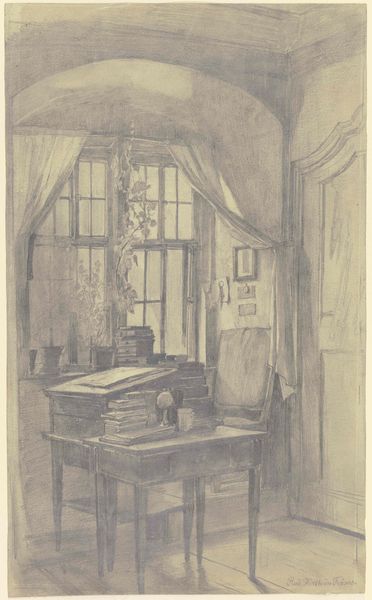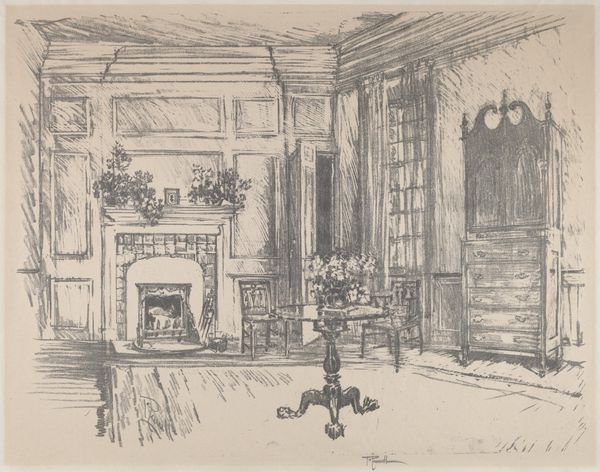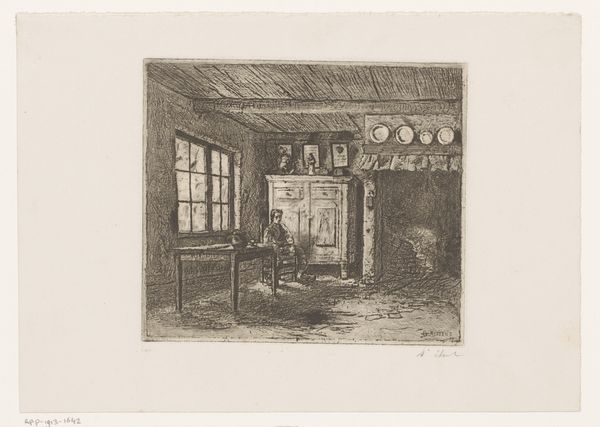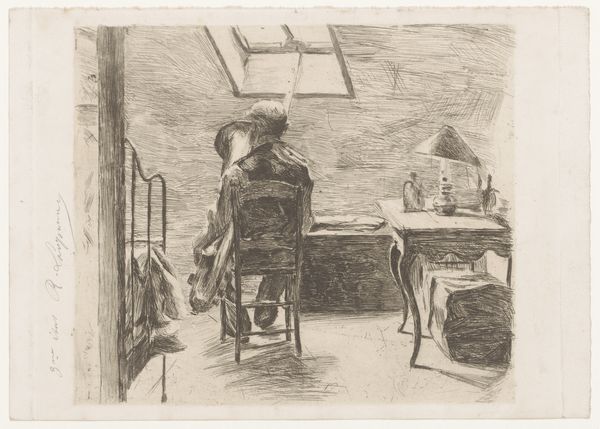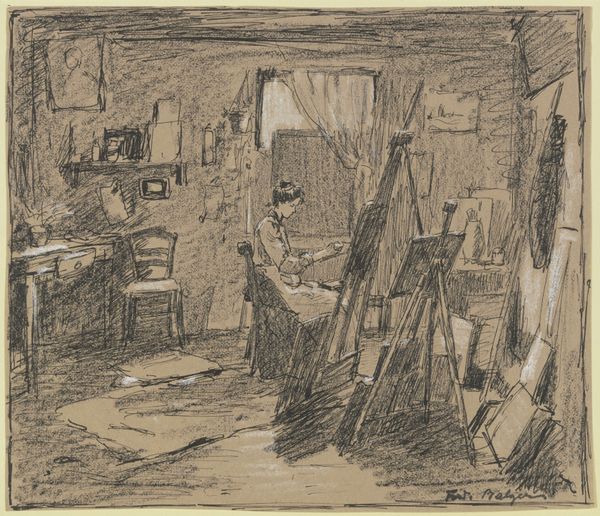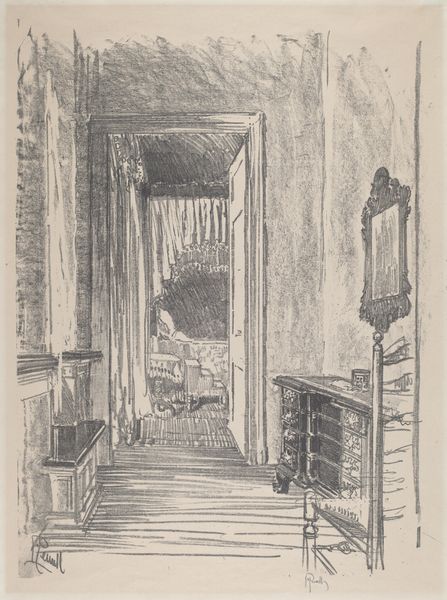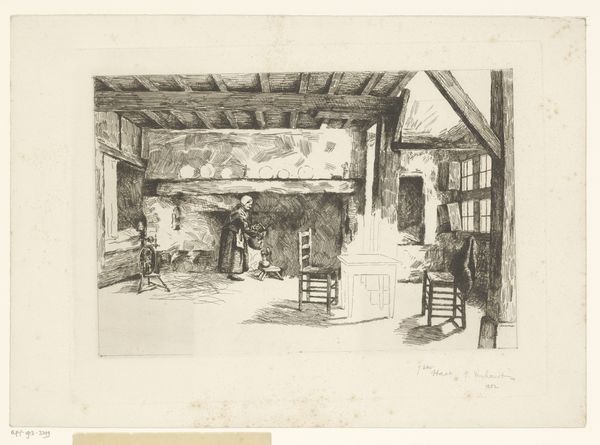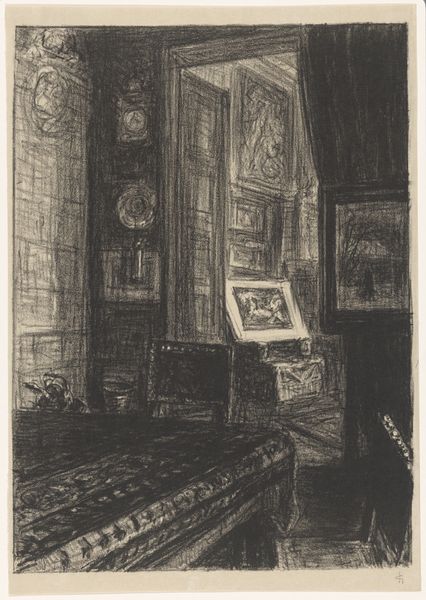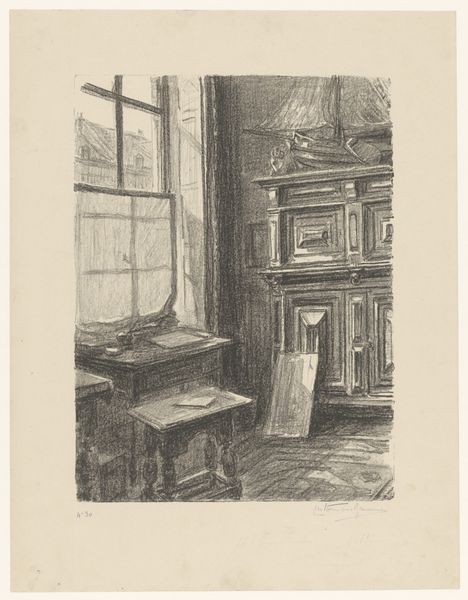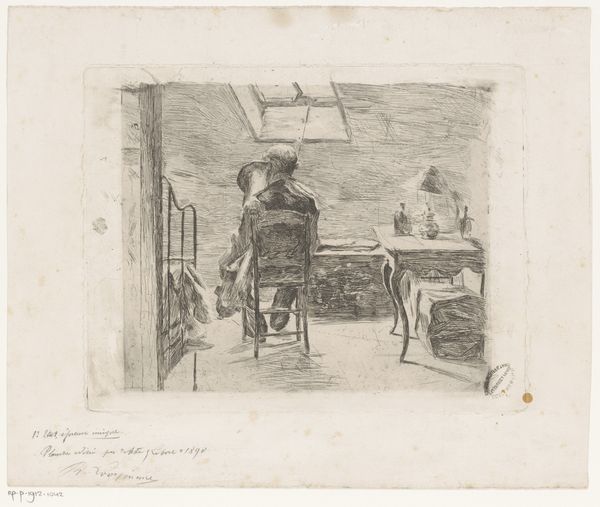
De studeerkamer van C.G. 't Hooft in de Roemer Visscherstraat 1801 - 1871
0:00
0:00
drawing, pencil
#
portrait
#
pencil drawn
#
drawing
#
pencil sketch
#
pencil drawing
#
pencil
#
realism
Dimensions: height 326 mm, width 457 mm
Copyright: Rijks Museum: Open Domain
Curator: I find this unassuming pencil drawing to be quite striking. This is "De studeerkamer van C.G. 't Hooft in de Roemer Visscherstraat," depicting the study of Cornelis Gerardus 't Hooft. Though he lived from 1791 to 1871, the date of the work is not known with more precision. Editor: My first impression is that it feels…melancholy? Or maybe contemplative. The grayscale really emphasizes the quiet intimacy of the space. There is such intricate detailing but also softness to the whole image. Curator: That softness comes from the artist's adeptness with pencil shading, especially. This could almost be a photograph with that depth. There's an emphasis here, not just on depicting a room, but capturing its unique atmosphere, I think. Editor: Definitely. I am fascinated by the composition, which includes multiple sources of light. We have daylight flooding in through the central window, but then also lamplight bouncing from reflective surfaces, it really brings this scene to life and creates contrasts of brightness and darkness which I imagine reflected more than physical light. Curator: Light as knowledge, perhaps? After all, a "studeerkamer" – study, or studio – is often associated with scholarly activity. Thinkers, readers, intellectuals—they spend a lot of time in rooms such as this. But I wonder if Hooft meant it as more than this...it really appears that Hooft used a technique in which light contrasts shadow. Editor: I am struck by how such a seemingly simple medium like pencil can convey so much about class, about access to spaces of leisure and intellectual pursuit. It raises so many questions about who is allowed to occupy these kinds of rooms, to devote themselves to study and reflection, and who is excluded. We often assume white male perspectives for studies. It opens up critical pathways that highlight systems of power and inequality. Curator: Yes! The composition makes me think of Vermeer – everyday scenes imbued with understated importance. "Intimate interiors" might even become something grander. Even though 't Hooft isn’t as technically skilled as some Golden Age painters, you get a feeling that the space reflects the man and what's inside his mind. Editor: Exactly! The quiet, the order...It’s really got me thinking about the power of architecture to shape not just our lives but also our thoughts. Curator: The longer I look, the more stories I see hidden within its lines. Editor: It has certainly broadened my perception—art as a critical lens.
Comments
No comments
Be the first to comment and join the conversation on the ultimate creative platform.
